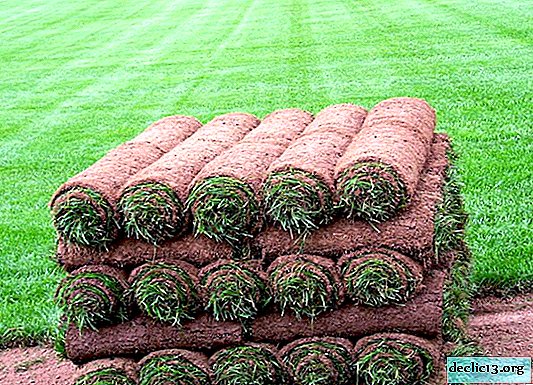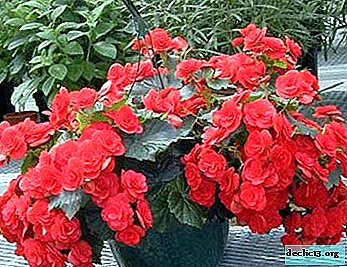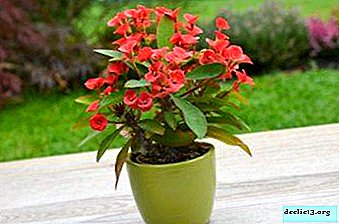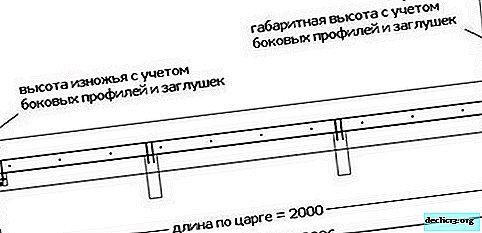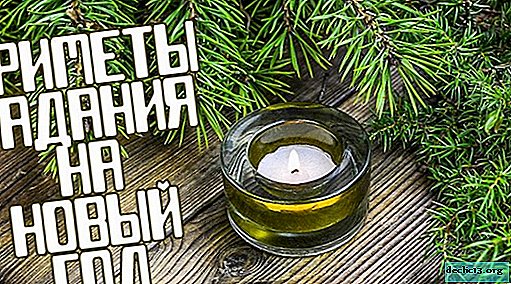Graceful rose Mona Lisa - all the information about the flower
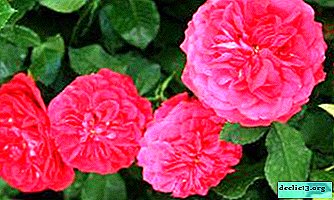
The Rose. What do we imagine when we pronounce this word? Beauty, grace, delicate aroma that inspire and delight each of us.
Breeders have come a long way of trial and error to bring these amazing flowers to this world. Today we’ll talk about roses like Monrib Lisa floribunda. In the article you will read the description of this rose, you will see it in the photo, you will learn how to care and propagate.
Description and photo
This rose belongs to the series "Romance" and from year to year it becomes more and more popular. Similar in stability and nature of inflorescences with polyanthus, in the shape of flowers similar to tea-hybrid roses. Her flowers are large (up to 9 cm) have a luxurious dark red color, bushy (up to 90 lp.) Buds are large, in small inflorescences up to 5 pieces. The aroma is very light, barely perceptible. Small shiny dark green leaves adorn the stem..
Bushes reach a height of 70 to 80 cm. Repeated flowering: blooms until late autumn (June to October), almost continuously. Unpretentious, frost-resistant (fifth winter hardiness zone from -26 ° C to -29 ° C), resistant to diseases (black spotting, powdery mildew), medium resistance to rain. Awarded the ADR Award, Monza Competition Silver Medal.
See how this flower looks in the photo.




History of occurrence
The floribunda family was obtained as a result of crosses of hybrid-polyanthus roses with tea-hybrid and other garden groups. "Floibunda" literally means "blooming profusely".
The variety itself, Mona Lisa, is quite new, since it was opened in 2007 by the French company Meilland International.Differences from other species
Mona Lisa roses are distinguished from the other varieties by their amazing winter hardiness, disease resistance and long flowering.
Bloom
Roses bloom from June to October, each flower is collected in an inflorescence, on one peduncle there can be up to 5 flowers at a time.
Care before and after
In order for the flowers to please you with their marvelous flowering as long as possible, we need:
- regular and plentiful watering;
- seasonal top dressing (alternation of mineral impurities and organics);
- loosening and mulching of the soil;
- pruning.
 In early spring, you can add peat and manure to the soil, so the bush will receive additional nutrition.
In early spring, you can add peat and manure to the soil, so the bush will receive additional nutrition.
With the onset of winter, roses need protection. Despite their unpretentiousness, they need to be covered:
- cut bushes in half;
- remove the remaining leaves;
- spud the earth;
- cover with oak leaves, spruce branches.
Your snow cover is ready.
What to do if it does not bloom?
Everyone may encounter the fact that this abundantly flowering variety has ceased to please with its buds. This indicates improper care. The reasons may be:
- defeat of fungal diseases that inhibit the development of flowers;
- unsuitable soil (soil acidity should be 6-7 pH);
- severe frosts (the plant must be prepared in advance for winter).
Use in landscape design
For these beautiful flowers, there is a place in any garden. A rose can become the basis of a flower garden, transform a mixborder, be used in a group or single landing. The plant is suitable for any landscape style.
Step-by-step care instructions
A place
Rose health depends on the place of planting. It is necessary to find a lit place where the plant can be in the shade in the midday heat, this will help to avoid burns at the petals. Also, roses will be comfortable in a corner where there is no permanent drying draft.
Time
Floribundas like warm months. The best option is from mid-April to the end of May. However, if you decide to plant flowers in the fall, then you should start by mid-September, because before the onset of frost they will have time to take root. The deadline for landing is mid and late October.
What should be the soil?
 Breathable soil is perfect for rose busheswhere the plant will be provided with sufficient moisture and air.
Breathable soil is perfect for rose busheswhere the plant will be provided with sufficient moisture and air.
To make clayey heavy chernozem light, add peat, compote, sand or humus to them.
If the soil is too light, then it is necessary to introduce clay soil with the addition of turf soil, compost or humus. A favorable soil reaction is slightly acidic. The optimum depth of groundwater is at least 100 cm.
Landing
We list the known methods of landing.
Seed cultivation
It is very important to get quality seeds. They are planted in the ground in compliance with the care regimen. This is not to say that such a landing will give one hundred percent pitting, usually several shoots are obtained from a pack.
Important! At home, this method is ineffective, since it is difficult to maintain the species characteristics of roses.Seedlings
How to choose a seedling? The seedling should have three matured lignified shoots with intact bark and a developed root system with many thin roots. The diameter of the root neck should be the same below and above the site of vaccination and not exceed 5-8 mm.
- First way. Landing together. Pour the finished mixture into the pit, then lower the seedling into it to a depth of 8 cm. The second person straightens the roots and covers them with the soil mixture, compacting with his hands. After this, the seedling is watered until completely absorbed and spud with earth, leaving until spring. When planting, try not to damage the bark on the neck and skeletal roots.
- Second way. A bucket of water with a tablet of heteroauxin or sodium humate is poured into the pit. You hold the seedling with one hand, lowering it into the center of the pit, with the other, slowly fill the soil mixture. Compact the earth periodically and shake the plant. Watering in this case is not needed. If the earth has subsided, slightly raise the seedling, adding earth and hilling it by 15 cm. After the seedlings need to be pritenit, it will take 10-12 days.
Temperature
Rosa Mona Lisa tolerates the Russian winter well, its frost resistance allows it to tolerate low temperatures up to -29⁰C.
Watering
 Any plant needs water. Do not forget that in different phases of growth, water consumption is not the same. In the period of intensive development (budding, the appearance of leaves) and after the first flowering, the rose (new shoots) is very in need of watering. Do not water the flowers in the heat, spray without falling onto the leaves, settled water from a watering can without a nozzle to the base of the bush.
Any plant needs water. Do not forget that in different phases of growth, water consumption is not the same. In the period of intensive development (budding, the appearance of leaves) and after the first flowering, the rose (new shoots) is very in need of watering. Do not water the flowers in the heat, spray without falling onto the leaves, settled water from a watering can without a nozzle to the base of the bush.
The defeat of fungal diseases of wet leaves increases at night.
With the onset of autumn, you should refrain from watering. The need for moisture occurs if the soil is not moistened by precipitation.
Top dressing
Combined and organic fertilizers are used for top dressing. Please note that floribunda reacts to salts in the soil solution, refrain from large doses of fertilizer.
Before planting roses, the ground should be fertilized with cow dung.. It is tucked into the top layer, applying about kg per 1 m2 on light soil, about half of this value is on heavy soil.
Do not let the roots come into contact with fresh manure; this will have a detrimental effect on the seedling.
Fertilizers are applied from the second year, doing this every spring and summer.Weeding
Regular weeding will protect the plant from rotting roots.
Mulching
Before mulching, the soil is covered with special material (foliage, peat, hay or old manure). For proper care, use mulch or flooring. Spread an eight-centimeter layer of mulch between the bushes of flowers after pruning and processing the beds.
Loosening
For the growth and development of rose bushes need loose earthwhere moisture, air and heat penetrate. Loosening will save water for irrigation and fertilizer. Processing is carried out at a depth of not more than 10 cm.
Pruning
First year
- Autumn. Shorten the stems, trim the diseased roots before planting.
- Spring. Shorten the main shoots by 3-5 points from the base of the bush.
- Autumn. Pinch the main stems, flowering shoots, and trim the non-lignified shoots.
Second
- Spring. April-March. Trim all dead stems and cross shoots.
- Autumn. September October. Pinch flowering shoots and main stems. Trim non-flowering shoots. The following years.
- Spring. It is necessary to remove dead parts of flowers, weak stems and shoots that grow inward. The thickened middle of the bush should be rid of old stems.
Transfer
 Cuttings are suitable for this. The algorithm is simple:
Cuttings are suitable for this. The algorithm is simple:
- cut off woody shoots;
- remove thorns and leaves;
- treat sections with special preparations;
- set the cuttings half in the pits;
- stick to an interval of 20-30 cm;
- cover with a film to root;
- water, ventilate seedlings and loosen the soil.
Hide the young shoots for the winter, only after that the bushes can be planted in a new place.
Preparation for winter
Before shelter, cut roses and spud earth at the base of the bush. Build a frame of greenhouse arcs, rails, profile or wire, it should be 20-30 cm above the plants. A heater is laid on it, a film is stretched on top, side air ducts remain.
Roses calmly tolerate light frosts, so you should not rush into shelter.
Types and methods of reproduction
Cuttings
We cut the cuttings up to about 10 cm long, up to 0.7 cm thick, remove leaves and spikes. Put them in a phytohormone preparation for better rooting. The pit should be more than 10 cm, with one straight side, where the stalk will lean. Recommended landing distance 15-20 cm. Then we cover this system with a film and periodically remove it for maintenance (airing, watering, etc.). Do not forget to remove weeds, they will inhibit the growth of flowers.
Cuttings are prepared from young strong bushes.Budding
The method is quite complex, subject to professionals. The grafts are vaccinated against the donor, wild rose hips, they are wound together for a month, so as not to disturb the growth. Slices gloss over garden var. After two weeks, we check the kidney, if it is green and swollen, everything is fine, otherwise the result is unsuccessful.
Diseases and Pests
 The most famous pests: spider mite, rodent aphid or sawfly. The spider mite and the rodent sawfly are exterminated by DDT, Isofen or Acrex. Aphids can be removed by hand or with the help of Rogor, etc.
The most famous pests: spider mite, rodent aphid or sawfly. The spider mite and the rodent sawfly are exterminated by DDT, Isofen or Acrex. Aphids can be removed by hand or with the help of Rogor, etc.
- Rust. Orange-red spots on the leaves are treated with zinc preparations.
- Black spotting. Black spots on leaves that are interconnected. You can use mullein infusion, if this does not help, then treat with Kaptan.
- Powdery mildew. Red-brown spots, which are covered with plaque. It should be treated with mullein infusion or Benlat, Karatan insecticides should be used.
Exclude soil acidification near the planting area to protect the plant from this disease.
Amazing properties, easy care and amazing appearance will not leave indifferent any nature lover. This rose is suitable for both a novice gardener and a true professional in his field. Thanks to its flowering, Mona Lisa will delight you for more than one year.


